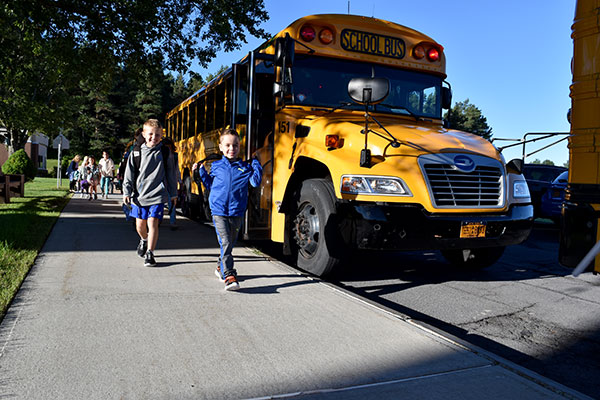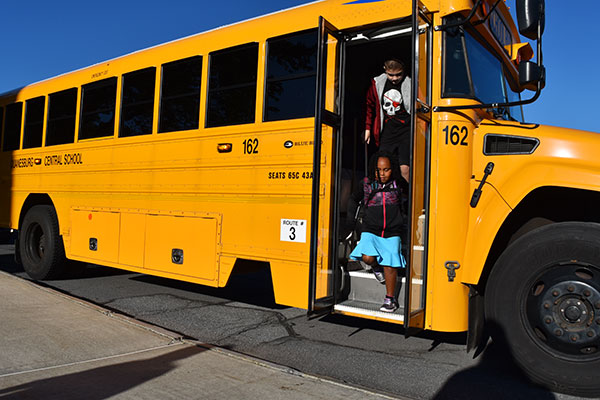
When DCS cast their budget ballots each May, they are also typically asked to vote on replacing a small number of school buses. The purchases are part of the district’s planned bus replacement program that keeps the fleet of vehicles that transport our children in safe, working order and in line with New York State safety standards.
Most of the cost of planned replacement vehicles – usually two to three buses a year – is typically covered by state aid, reducing the cost to taxpayers.
Why replace with new buses?
Each year, the district replaces older buses that are becoming costly to maintain due to frequent repairs and/or the need for replacement parts. In addition to mechanical concerns, road salt and other deicers used during our northeast winters can deteriorate bus bodies and frames.
State law requires school buses to undergo rigorous and detailed safety inspections twice each year. State inspectors tell the district whether the buses are running efficiently and safely, and they also monitor body and undercarriage corrosion.
How long does DCS keep its buses?
The State Education Department recommends school districts replace small buses every five to seven years and large buses every 10 years. At DCS, retired buses are typically 10 years old and unlikely to pass state safety inspections without significant investment in parts and repairs.
If the district did not retire older vehicles, they would continue to deteriorate, potentially increasing risks to students, incurring unexpected repair costs and decreasing trade-in value.
If the district did not retire older vehicles, they would continue to deteriorate, potentially increasing risks to students, incurring unexpected repair costs and decreasing trade-in value.
60 square miles to travel – and beyond
DCS buses transport hundreds of students from grades K-12 throughout the district’s 60 square miles each day – and beyond: Buses are also used to transport students and staff for field trips, sporting events and other out-of-district destinations throughout the year, including summer.
How else does DCS keep costs down?
In addition to careful vehicle maintenance, trading-in buses, and a planned, state-aid-reimbursed bus replacement program, DCS saves on transportation costs by sharing services with other school districts whenever possible to transport students efficiently and cost effectively.

